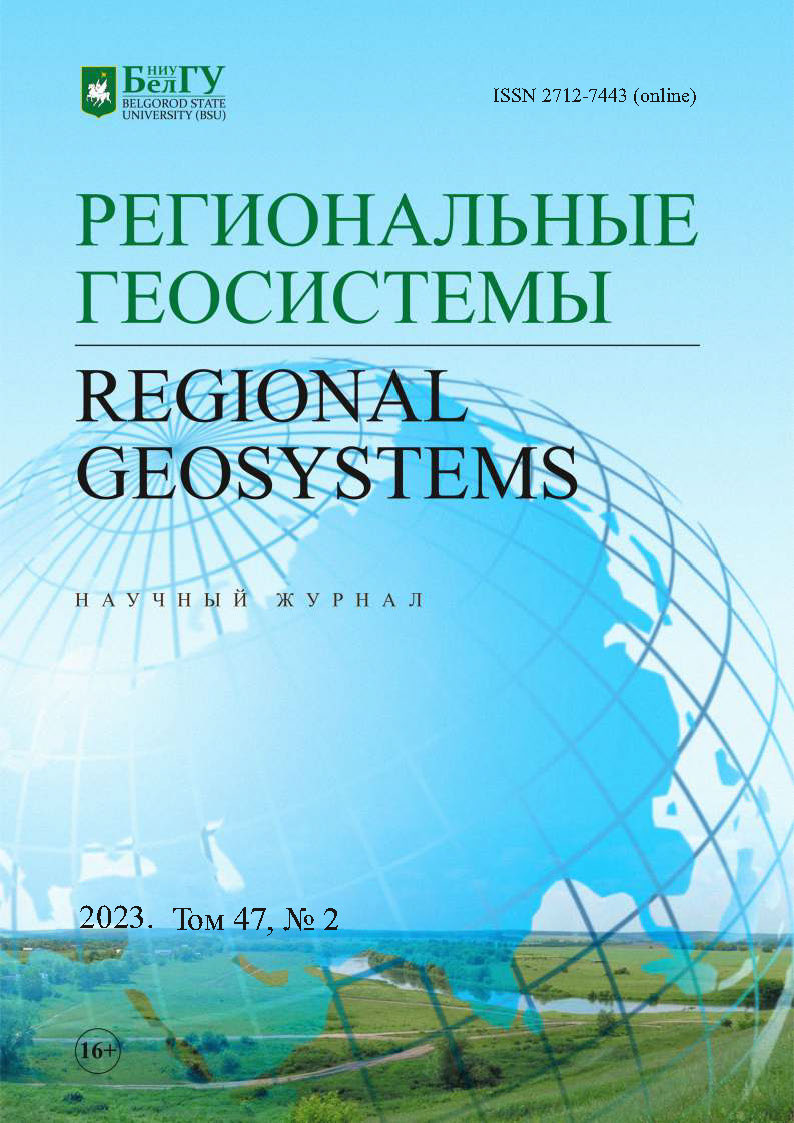Nature-Likeness of Agroforestry Reclamation Systems
DOI:
https://doi.org/10.52575/2712-7443-2023-47-2-268-281Keywords:
agroforestry, nature-likeness, system, theoretical concept, ecosystem services, economic and social benefitsAbstract
Of all types of land reclamation, agroforestry is the closest to nature. However, the lack of clear principles of nature-likeness of the agroforestry system (ALMS) makes it difficult to maintain natural processes in it that contribute to the provision of appropriate ecosystem services and the receipt of socio-economic benefits. Therefore, the purpose of the research was to substantiate the principles of the nature-likeness of ALMS and to draw up an appropriate visual model. The research methodology is based on the analysis of visual models that represent metaphors for the natural similarity of agroforestry. As a result, biotic, bioinertic, and other solutions were refined, three basic principles for creating nature-like agroforestry systems were identified, and a visual model of the theoretical concept of such nature-likeness was presented. The principle of copying natural processes includes: observing the ecological principles inherent in natural systems, ensuring the necessary self-regulation of ALMS, regional biodiversity, the intensity of material and energy manifestations of reclamation forest plantations; their adaptation to environmental factors and agrocenoses; maintenance of biological cycles with the reproduction of natural resources. The principle of providing ecosystem services, obtaining economic and social benefits is manifested through the regulation of erosion-accumulation processes; mitigation of adverse events; green farming strategies; solution of economic and social problems. The principle of economic stimulation of natural processes is due to forest management, minimal disturbance of the soil and the consistency of cultural and technical solutions with the requirements of nature protection. The results of the study provide an illustrative model of the nature-likeness of ALMS, which is determined by actions (decisions) copied from nature or stimulating processes close to nature, which cause less damage to the biosphere, provide ecosystem services and bring benefits.
Downloads
References
Вернадский В.И. 2004. Биосфера и ноосфера. М., Айрис Пресс, 573 с.
Гусев Е.М. 2020. Эволюция технологий в земледелии: от «серых» до «зеленых». Аридные экосистемы, 26 (1(82)): 3–12.
Елизаров А.В. 1998. Экологический каркас – стратегия степного природопользования XXI века. Степной бюллетень, 2–4: 23–35.
Ивонин В.М. 2019. Анализ мелиоративного потенциала лесоаграрного ландшафта. Научный журнал Российского НИИ проблем мелиорации, 2(34): 51–67. DOI: 10.31774/2222-1816-2019-2-51-67
Ивонин В.М. 2020. Визуальная модель системы лесных мелиораций природно-антропогенных ландшафтов. Научный журнал Российского НИИ проблем мелиорации, 3(39): 68–82. DOI: 10.31774/2222-1816-2020-3-68-82
Ивонин В.М. 2022. Теоретическая концепция совершенствования мелиоративных систем. Региональные геосистемы, 46(3): 322–338. DOI: 10.52575/2712-7443-2022-46-3-322-338
Кирейчева Л.В. 2011. Подходы к инновационному развитию комплексных мелиораций агроландшафта. В кн.: Инновационные технологии в мелиорации. Костяковские чтения; материалы Международной научно-практической конференции. Москва, 13 апреля 2011. М., Всероссийский научно-исследовательский институт гидротехники и мелиорации: 100–108.
Кузьмина Т.С. 2004 Агролесомелиорация – стратегия эколого-экономической оптимизации аридных ландшафтов Нижнего Поволжья. Известия Волгоградского государственного педагогического университета, 4(9): 113–119.
Кундиус В.В. 2010. Роль агролесомелиорации в повышении экологической устойчивости и экономической эффективности агроландшафтов. Природообустройство, 4: 92–95.
Михин В.И., Михина Е.А. 2014. Агролесомелиорация в условиях адаптивно – ландшафтного земледелия Центрального Черноземья. Современные проблемы науки и образования, 6: 1652.
Новиков Д.В., Исаев А.С. 2012. Формирование экологического каркаса территории при землеустройстве. Природообустройство, 2: 7–12.
Панов В.И. 2018. Ландшафтно-географическая методология (географический принцип В.В. Докучаева) ресурсного управления и преобразования степного незащищённого агроландшафта в улучшенный природоподобный противоэрозионный агроландшафт лесостепного типа. Известия Самарского научного центра Российской академии наук, 20 (2–3(82)): 511–528.
Поляков В.В. 2021. Роль природоподобных технологий в обеспечении воспроизводства природно-ресурсного капитала сельскохозяйственной сферы. Вестник Ростовского государственного экономического университета (РИНХ), 3(75): 49–54.
Щербакова Л.Б., Корнеева Е.А., Колоссов И.И. 2008. Эффективность капитальных вложений в защитное лесоразведение Нижнего Поволжья. В кн.: Защитное лесоразведение, мелиорация земель и проблемы землеведения в Российской Федерации. Материалы Международной научно-практической конференции, Волгоград, 23–26 сентября 2008. Волгоград, ВНИАЛМИ: 55–58.
Seddon N., Daniels E., Davis R., Chausson A., Harris R., Hou-Jones X., Huq S., Kapos V., Mace G.M., Rizvi A.R., Reid H., Roe D., Turner B., Wicander S. 2020. Global Recognition of the Importance of Nature-Based Solutions to the Impacts of Climate Change. Global Sustainability, 3: E15. DOI:10.1017/sus.2020.8
Simelton E., Carew-Reid J., Coulier M., Damen B., Howell J., Pottinger-Glass Ch., Tran H.V., Van Der Meiren M. 2021. NBS Framework for Agricultural Landscapes. Frontiers in Environmental Science, 9: 678367. DOI: 10.3389/fenvs.2021.678367
Sowińska-Świerkosz B., García J. 2022. What are Nature-Based Solutions (NBS)? Setting Core Ideas for Concept Clarification. Nature-Based Solutions, 2: 100009. DOI: 10.1016/j.nbsj.2022.100009
Telwala Y. 2022. Unlocking the Potential of Agroforestry as a Nature-based Solution for Localizing Sustainable Development Goals: A Case Study from a Drought-Prone Region in Rural India. Nature-Based Solutions, 3: 100045. DOI: 10.1016/j.nbsj.2022.100045
Abstract views: 235
Share
Published
How to Cite
Issue
Section
Copyright (c) 2023 Regional Geosystems

This work is licensed under a Creative Commons Attribution 4.0 International License.


